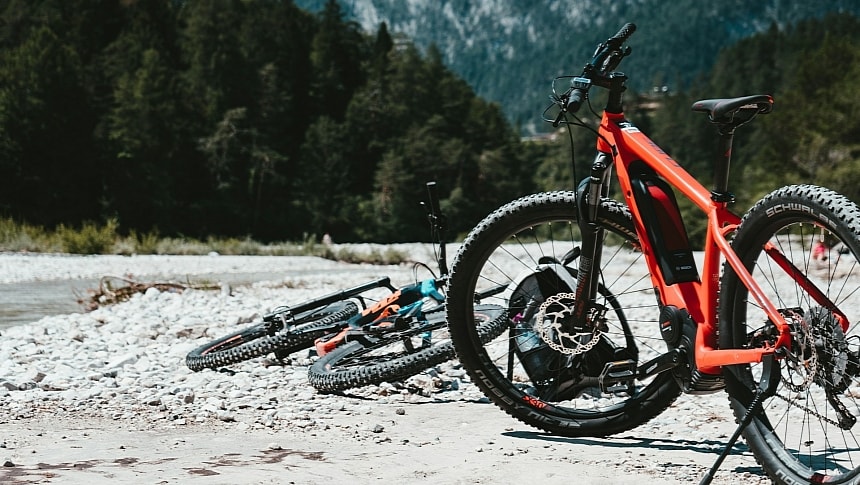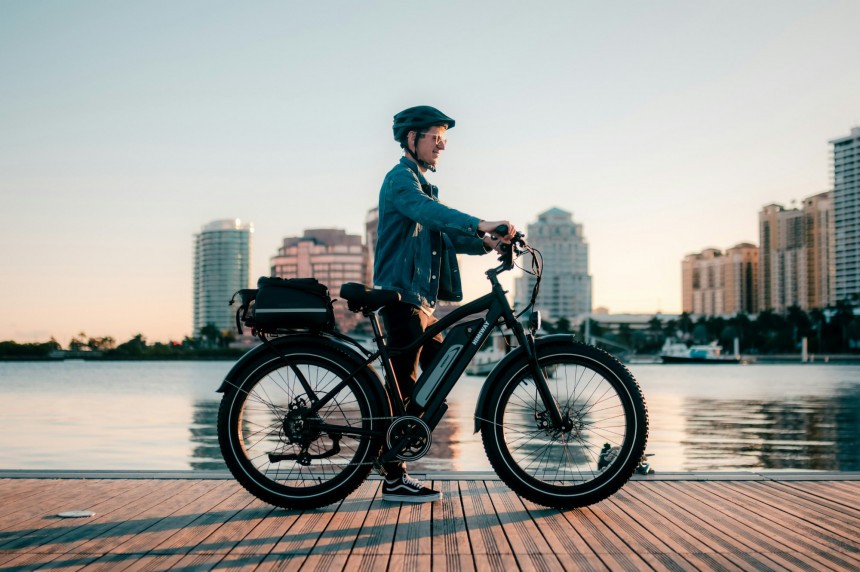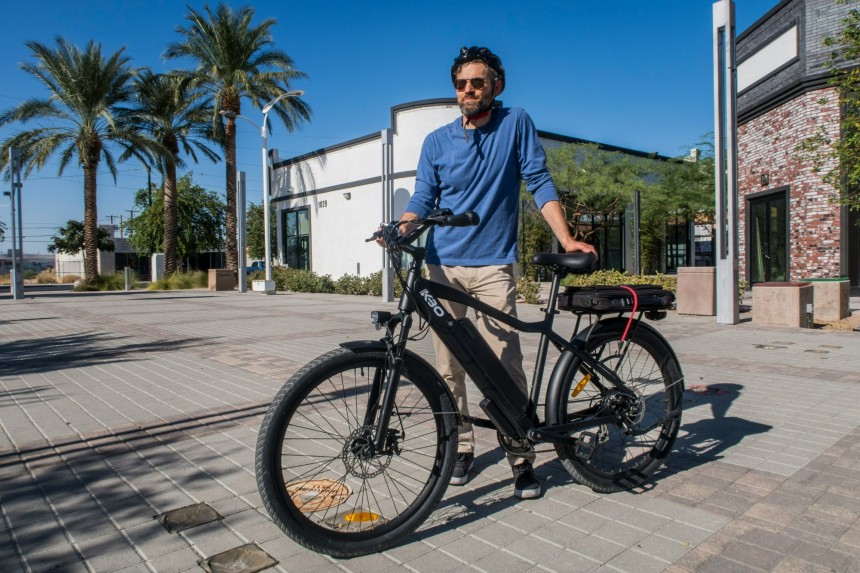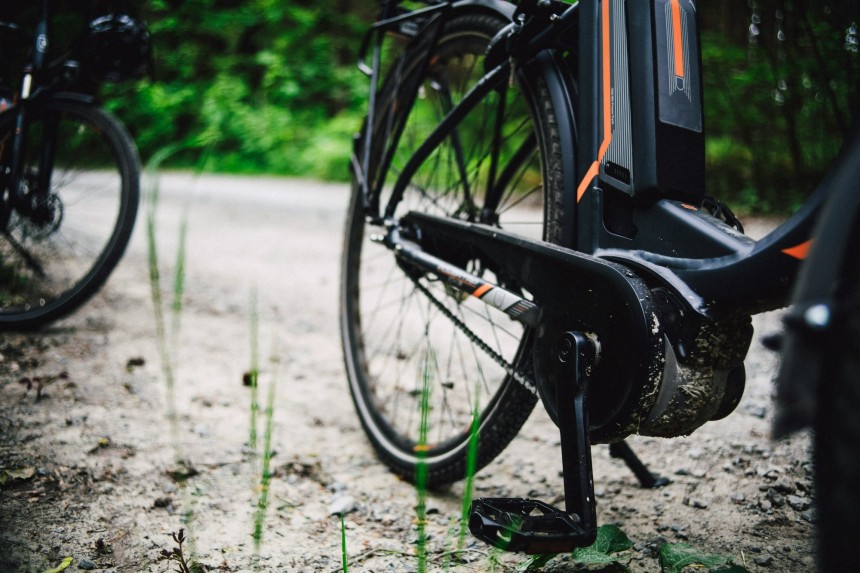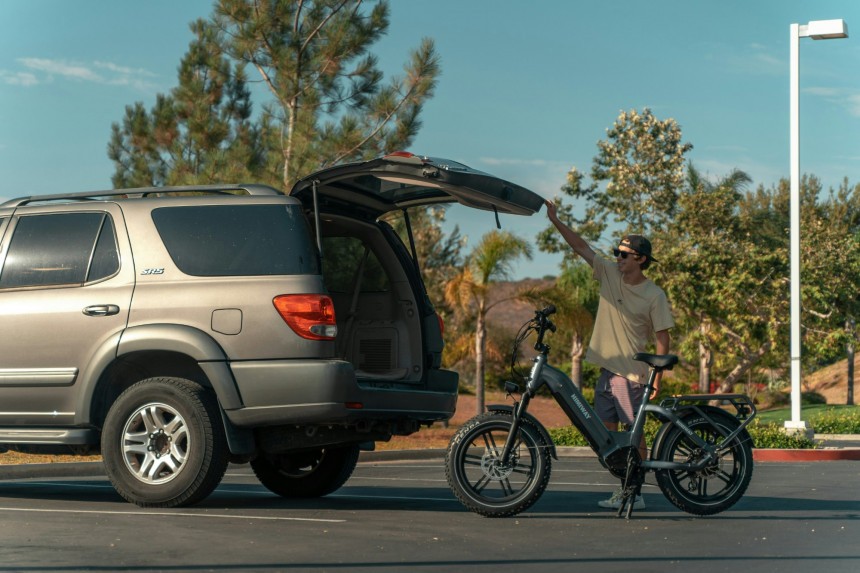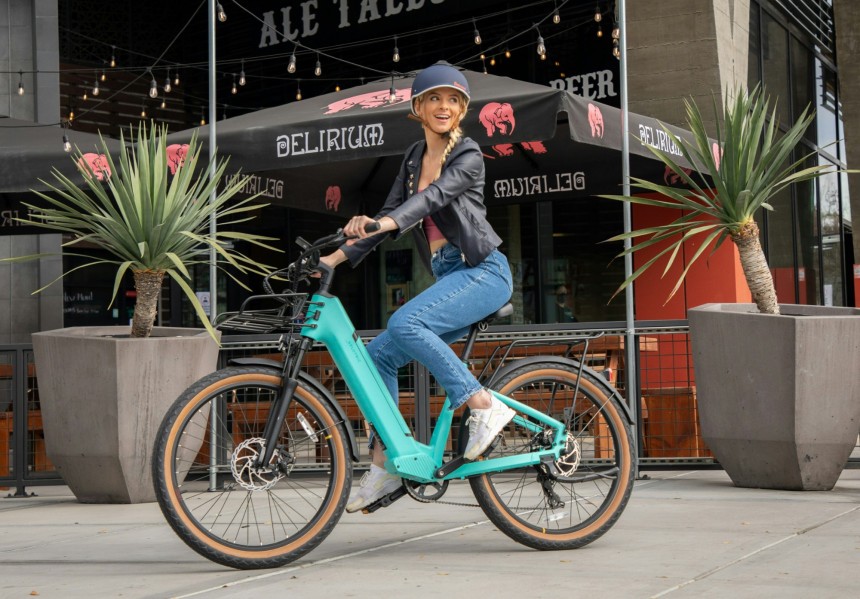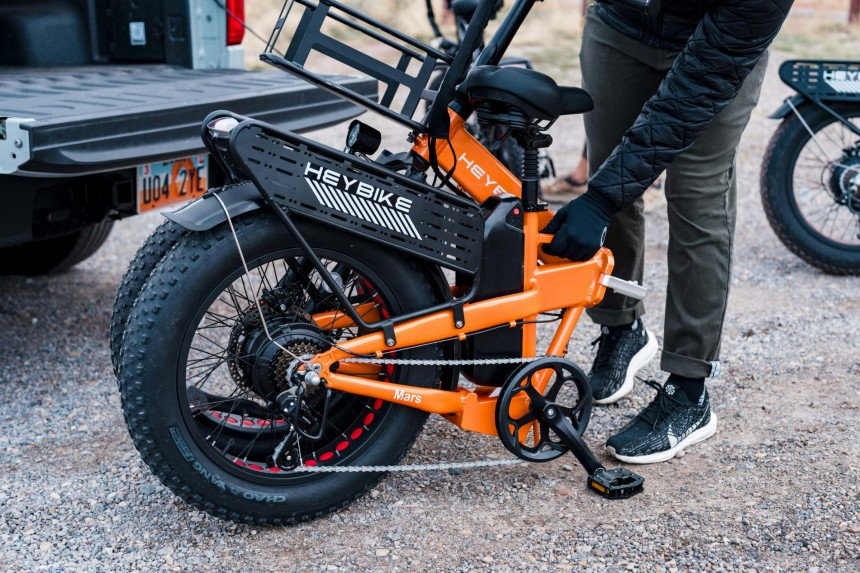I'm a big fan of e-bikes, and that's why I often write about them. However, I'd be ignorant to say they don't have disadvantages. So, today, I challenged myself to talk mostly about their cons.
Before I go into detail, let me lay out some general info regarding e-bikes. They have been around since the late 1800s, but they started to rise in popularity much later, in the 90s. The initial problem was their size and weight, which can arguably still be considered an issue today, albeit one with less impact, as the invention of lithium-ion batteries solved a significant part of the problem.
E-bike popularity has continued to grow, partly due to government and corporate incentives meant to help people ditch cars. Then the pandemic hit, leading to another boom in sales, as well as problems due to the lack of some parts and resources to support the extreme growth. With gas prices on the rise, longer traffic hours, and excellent deals on e-bikes, we're bound to see this upward trend continue.
The North American e-bike market is estimated at $3.45 billion in 2024 and is expected to reach $7.54 billion by 2029. Similar upward trends can be seen across the globe. In Europe, almost 55% of the bicycles sold by 2030 will be electric. So, it's clear that e-bikes are here to stay, and we'll see various improvements in their technology in the near future.
Just like conventional bikes, there are various electric two-wheelers you can purchase, from commuter e-bikes to e-MTBs, cargo/utility e-bikes, and more. In this article, I won't focus on any specific type but rather talk about them generally.
E-bikes are generally considered a premium product, so they come with various premium features, such as aluminum frames, carbon fiber parts, higher-end groupsets, and more. Moreover, electric motors that work smoothly with e-bikes aren't easy to design and produce.
The supply and demand for e-bikes have increased dramatically lately, but they're still behind that of traditional bikes. That gives bicycles more supply power, making them easier to sell and, therefore, more competitively priced.
We should also factor in dealer and customs fees, as well as the cost coverage for the occasional unhappy customer who has the right to get an e-bike refund. Manufacturers and distributors take all of this into account when determining a price for their e-bikes.
Unlike other EVs, such as cars and motorcycles, e-bikes have smaller component and area requirements. What I mean is that we want them to have the best technology possible while keeping weight and size down. This makes the effort of creating a product that finds the ideal balance between technologies and dimensions much more challenging and costly. Naturally, that leads to a higher retail price.
That said, the e-bike market today is extremely competitive, which is good news for consumers. Manufacturers are fighting to get their piece of the pie, which means better prices for us consumers.
To be frank, prices are still an issue. If you want a high-end e-bike, you'll have to dish out at least a few thousand dollars. What's more, the more specialized the e-bike is, such as e-MTBs, the more you'll have to pay to get the top-of-the-range capabilities. For instance, a Specialized Turbo Levo Comp Carbon, which is an excellent choice for an e-MTB, will set you back $9,000. You can buy a decent car with the same money.
On the other hand, going for a cheap e-bike comes with its own set of problems. Sure, you can find extremely cheap Chinese e-bikes, but you'll more than likely find that they're fitted with poor-quality parts, which can put you in danger. You spend less at the beginning, but you'll end up investing more to change the parts or to buy another e-bike if you're dissatisfied with the product.
Generally, you can find a good quality e-bike by spending at least $1,000, maybe even a bit less than that. Of course, it will depend on the type of e-bike you're looking for. If you're searching for your first or next budget-friendly e-bike, you can check out my article about the best affordable e-bikes by type of rider.
The same goes for e-bikes since they have the same features. However, e-bikes come with more electronic components that aren't that easy to maintain, such as the motor and battery. These components typically require specialized attention, which translates to higher maintenance costs and limited accessibility to skilled technicians.
There's also the issue of component replacement. Generally, the motor and battery will last a while, but you have to take into account that you might want to replace the battery if you plan on holding on to the e-bike for a long time. That brings me to my next point.
The same goes for motors, which are generally more reliable but still prone to wear and tear. Damage from impacts and exposure to moisture are two of the factors that impact a motor's performance.
With the proper care and routine maintenance, you can mitigate these risks. However, you can't completely eliminate them, which is something you should take into account before getting an e-bike.
How does the extra weight affect the rider? Well, it makes the two-wheeler more challenging to navigate tight spaces and sharp turns. However, one bigger issue (at least for me) is when you have to take your e-bike on stairs or pretty much anytime you have to lift it. I have to lift my e-bike every time I leave and get home, and it's not something I look forward to doing.
28 mph might not sound like much, but it's enough to put you in danger if you have an accident. Stopping power is critical on any type of bike, but it's even more important to have proper brakes on an electrified machine. Luckily, many models, even affordable ones, offer hydraulic brakes nowadays.
There's one safety issue that's much more dangerous: battery fires. Lithium batteries, the kind used in most of today's e-bikes, are incredibly deadly and unpredictable. They don't cause a normal fire. Battery fires burn extremely fast – as the New York City Fire Commissioner Laura Kavanagh explained, "It can often be too late, as soon as the fire has begun."
There's no sense in fighting the fire with a fire extinguisher, as it won't extinguish the flames from a lithium battery fire. The best thing to do is get the hell out of there and call 911.
The number of fatal fires caused by e-bike batteries is on the rise, proportionally with the number of devices available. For instance, according to The Guardian, the London Fire Brigade recorded 149 e-bike fires and three deaths last year, compared to 87 e-bike fires in 200 with no deaths recorded.
However, there's more behind the story. In this case, an analysis found that 73 e-bike fires in London involved a converted e-bike: a normal bike that was electrified with a kit. My point is this: most cases involve the mismanagement of the battery rather than a factory defect. Of course, defects happen, but people seem to be careless with their batteries. They either use aftermarket or unsuitable chargers, overcharge the battery, or use batteries that come from unverified makers.
Instructions are always written in the owner's manual, but it's easy to skip reading them (just like we agree to terms and conditions without actually reading them).
Manufacturers can also do their part to ensure adequate safety. For example, Rad Power Bikes announced its SafeShield system - long story short, the company is injecting each battery cell with a heat-absorbing resin that's meant to keep accidents from "escalating."
E-bikes have higher resale value and easy resale potential. Most aren't protected by an alarm or security system, making them even easier to steal. I recommend that regardless of your bike type, secure it with a high-quality lock and store it indoors when possible.
However, when it comes to charging, you'll need to plan your ride beforehand and make sure you charge your battery. Some e-bikes offer fast charging, but most batteries require you to charge them for at least 3-4 hours to fully juice them up.
According to Anna de Bortoli, a carbon neutrality researcher at Polytechnique Montréal, most of an e-bike's GHG (greenhouse gases) emissions come from its manufacturing, particularly the manufacture of the aluminum frame.
Batteries get bad press because of electric cars – they carry several hundred pounds of batteries, while the e-bike battery weighs just a few kilos. That means there aren't a huge amount of emissions involved with its production. Let's talk actual numbers.
For a 20 kg aluminum bike manufactured in China, the production of the frame emits 181 kg (400 lb.) of CO2e. By contrast, the battery emits only 20 kg (44 lb.) of CO2e, and the motor 37 kg (82 lb.) of CO2e. So, the frames are a bigger issue when it comes to emissions.
With millions of e-bikes sold annually in the United States alone, they must be safely and responsibly collected and recycled at their end-of-life. This is where we can do our part to help out – make sure we recycle properly.
You still have to use your legs with a pedal-assisted bike. However, some e-bikes also come with throttles, which makes pedaling obsolete. Just push or twist a throttle, and there's no more need to deploy any muscle power.
Sure, electric assistance can prove useful when going up hills or on longer commutes, but it also makes you less inclined to break a sweat.
Maybe I'm just a die-hard fan of e-bikes, but these drawbacks don't discourage me from buying an e-bike. I think their pros far outweigh the cons, and the only way from here is up. Personally, I hope we'll see more and more e-bikes on the road in the near future.
E-bike popularity has continued to grow, partly due to government and corporate incentives meant to help people ditch cars. Then the pandemic hit, leading to another boom in sales, as well as problems due to the lack of some parts and resources to support the extreme growth. With gas prices on the rise, longer traffic hours, and excellent deals on e-bikes, we're bound to see this upward trend continue.
The North American e-bike market is estimated at $3.45 billion in 2024 and is expected to reach $7.54 billion by 2029. Similar upward trends can be seen across the globe. In Europe, almost 55% of the bicycles sold by 2030 will be electric. So, it's clear that e-bikes are here to stay, and we'll see various improvements in their technology in the near future.
Just like conventional bikes, there are various electric two-wheelers you can purchase, from commuter e-bikes to e-MTBs, cargo/utility e-bikes, and more. In this article, I won't focus on any specific type but rather talk about them generally.
1. Price
Naturally, we want the best price/quality ratio for the products we purchase, regardless of their type. Price is one of the most (if not the most) significant buying factors for e-bikes. You might be wondering, "What makes e-bikes expensive?"E-bikes are generally considered a premium product, so they come with various premium features, such as aluminum frames, carbon fiber parts, higher-end groupsets, and more. Moreover, electric motors that work smoothly with e-bikes aren't easy to design and produce.
The supply and demand for e-bikes have increased dramatically lately, but they're still behind that of traditional bikes. That gives bicycles more supply power, making them easier to sell and, therefore, more competitively priced.
We should also factor in dealer and customs fees, as well as the cost coverage for the occasional unhappy customer who has the right to get an e-bike refund. Manufacturers and distributors take all of this into account when determining a price for their e-bikes.
Unlike other EVs, such as cars and motorcycles, e-bikes have smaller component and area requirements. What I mean is that we want them to have the best technology possible while keeping weight and size down. This makes the effort of creating a product that finds the ideal balance between technologies and dimensions much more challenging and costly. Naturally, that leads to a higher retail price.
To be frank, prices are still an issue. If you want a high-end e-bike, you'll have to dish out at least a few thousand dollars. What's more, the more specialized the e-bike is, such as e-MTBs, the more you'll have to pay to get the top-of-the-range capabilities. For instance, a Specialized Turbo Levo Comp Carbon, which is an excellent choice for an e-MTB, will set you back $9,000. You can buy a decent car with the same money.
On the other hand, going for a cheap e-bike comes with its own set of problems. Sure, you can find extremely cheap Chinese e-bikes, but you'll more than likely find that they're fitted with poor-quality parts, which can put you in danger. You spend less at the beginning, but you'll end up investing more to change the parts or to buy another e-bike if you're dissatisfied with the product.
Generally, you can find a good quality e-bike by spending at least $1,000, maybe even a bit less than that. Of course, it will depend on the type of e-bike you're looking for. If you're searching for your first or next budget-friendly e-bike, you can check out my article about the best affordable e-bikes by type of rider.
2. Maintenance
Maintenance for conventional e-bikes is fairly simple. Even as a complete beginner, you should spend a bit of time on YouTube and do most of the maintenance yourself, such as lubricating the chain or adjusting the brakes.The same goes for e-bikes since they have the same features. However, e-bikes come with more electronic components that aren't that easy to maintain, such as the motor and battery. These components typically require specialized attention, which translates to higher maintenance costs and limited accessibility to skilled technicians.
There's also the issue of component replacement. Generally, the motor and battery will last a while, but you have to take into account that you might want to replace the battery if you plan on holding on to the e-bike for a long time. That brings me to my next point.
3. Technical Reliability
The complexity of e-bike systems means a higher likelihood of technical issues compared to conventional bikes. Battery degradation is an issue that you can't avoid due to factors such as temperature fluctuations, regular usage, and overcharging; in the long term, batteries will have reduced range, decreased power output, and even experience failure.The same goes for motors, which are generally more reliable but still prone to wear and tear. Damage from impacts and exposure to moisture are two of the factors that impact a motor's performance.
With the proper care and routine maintenance, you can mitigate these risks. However, you can't completely eliminate them, which is something you should take into account before getting an e-bike.
4. Weight
Electric assistance in e-bikes comes at a price: added weight. It stems from the inclusion of electric motors, batteries, and other specialized components. Advancements in technology have led to lighter components, but you'll still feel a significant difference when upgrading from a normal bike to an e-bike. A standard e-bike tips the scales between 20 and 30 kg (44 and 66 lb.), while a typical road bike weighs about 8 kg (18 lb.).How does the extra weight affect the rider? Well, it makes the two-wheeler more challenging to navigate tight spaces and sharp turns. However, one bigger issue (at least for me) is when you have to take your e-bike on stairs or pretty much anytime you have to lift it. I have to lift my e-bike every time I leave and get home, and it's not something I look forward to doing.
5. Safety
Different safety issues are involved with e-bikes. First, we have ride safety, referring to how safe you are when riding. The difference between a conventional bike and an e-bike is that the latter goes much faster. In the United States, Top speed is limited to 28 mph (45 kph) as per Class 3 regulations, but you can unlock a higher top speed in some e-bike models.28 mph might not sound like much, but it's enough to put you in danger if you have an accident. Stopping power is critical on any type of bike, but it's even more important to have proper brakes on an electrified machine. Luckily, many models, even affordable ones, offer hydraulic brakes nowadays.
There's one safety issue that's much more dangerous: battery fires. Lithium batteries, the kind used in most of today's e-bikes, are incredibly deadly and unpredictable. They don't cause a normal fire. Battery fires burn extremely fast – as the New York City Fire Commissioner Laura Kavanagh explained, "It can often be too late, as soon as the fire has begun."
There's no sense in fighting the fire with a fire extinguisher, as it won't extinguish the flames from a lithium battery fire. The best thing to do is get the hell out of there and call 911.
However, there's more behind the story. In this case, an analysis found that 73 e-bike fires in London involved a converted e-bike: a normal bike that was electrified with a kit. My point is this: most cases involve the mismanagement of the battery rather than a factory defect. Of course, defects happen, but people seem to be careless with their batteries. They either use aftermarket or unsuitable chargers, overcharge the battery, or use batteries that come from unverified makers.
Instructions are always written in the owner's manual, but it's easy to skip reading them (just like we agree to terms and conditions without actually reading them).
Manufacturers can also do their part to ensure adequate safety. For example, Rad Power Bikes announced its SafeShield system - long story short, the company is injecting each battery cell with a heat-absorbing resin that's meant to keep accidents from "escalating."
6. Security
If you don't know the sinking feeling you get when you notice that your vehicle isn't where you left it, consider yourself lucky. Whether we like it or not, ill-intended people are everywhere, and bikes get stolen. Another con of an e-bike is that it's a more attractive target for theft compared to a standard bike.E-bikes have higher resale value and easy resale potential. Most aren't protected by an alarm or security system, making them even easier to steal. I recommend that regardless of your bike type, secure it with a high-quality lock and store it indoors when possible.
7. Range and Charging
Advancements in battery technology have led to a significant improvement in range. Even the smallest batteries allow you to ride for at least 50 miles (80 km), which is usually enough for most users.However, when it comes to charging, you'll need to plan your ride beforehand and make sure you charge your battery. Some e-bikes offer fast charging, but most batteries require you to charge them for at least 3-4 hours to fully juice them up.
8. Regulations
Regulations are also something to take into account. Naturally, they will vary depending on where you're from. For instance, different regions and jurisdictions might have different definitions and classifications of e-bikes. Some areas might categorize an e-bike as a bicycle, while others will classify it as a moped or motorcycle. This might pose a challenge for those who travel across different jurisdictions.9. Environmental Impact
When it comes to bikes, the "greenest" option you can go for is a conventional bike. What makes an e-bike a clean alternative is that you can use it instead of your car. However, as with any EVs, manufacturing e-bike components, especially batteries, consumes resources and generates carbon emissions.According to Anna de Bortoli, a carbon neutrality researcher at Polytechnique Montréal, most of an e-bike's GHG (greenhouse gases) emissions come from its manufacturing, particularly the manufacture of the aluminum frame.
Batteries get bad press because of electric cars – they carry several hundred pounds of batteries, while the e-bike battery weighs just a few kilos. That means there aren't a huge amount of emissions involved with its production. Let's talk actual numbers.
For a 20 kg aluminum bike manufactured in China, the production of the frame emits 181 kg (400 lb.) of CO2e. By contrast, the battery emits only 20 kg (44 lb.) of CO2e, and the motor 37 kg (82 lb.) of CO2e. So, the frames are a bigger issue when it comes to emissions.
With millions of e-bikes sold annually in the United States alone, they must be safely and responsibly collected and recycled at their end-of-life. This is where we can do our part to help out – make sure we recycle properly.
10. Limited Exercise Benefits
Another drawback of e-bike is that they reduce how much physical effort you put in when riding. Sure, you can turn off the electric assistance in most models, but will you actually do it? Most of us prefer to be comfortable. So, if there's an option that allows you to be more comfortable, you're probably going to take it, at least most of the times.You still have to use your legs with a pedal-assisted bike. However, some e-bikes also come with throttles, which makes pedaling obsolete. Just push or twist a throttle, and there's no more need to deploy any muscle power.
Sure, electric assistance can prove useful when going up hills or on longer commutes, but it also makes you less inclined to break a sweat.
Conclusion
The purpose of this article is to inform you that e-bikes have drawbacks and safety considerations. However, so much money is pumped into the industry, leading to more research, which in turn leads to innovative solutions for these issues.Maybe I'm just a die-hard fan of e-bikes, but these drawbacks don't discourage me from buying an e-bike. I think their pros far outweigh the cons, and the only way from here is up. Personally, I hope we'll see more and more e-bikes on the road in the near future.
